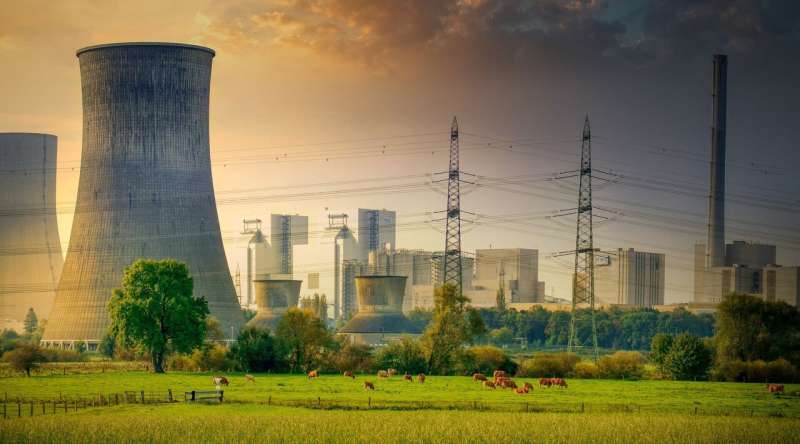High-Entropy Alloys: Enhancing Nuclear Reactor Safety with Atomic-Level Innovation
Published on Quantum Server Networks – Exploring Breakthroughs in Advanced Materials

Nuclear reactors and spacecraft operate in environments of extreme heat and intense radiation, conditions that push conventional materials to their limits. Stainless steel and other alloys, though widely used, can degrade when bombarded with energetic particles, raising long-term safety concerns. To address this, researchers at the Canadian Nuclear Laboratories (CNL) have turned to an advanced class of materials known as high-entropy alloys (HEAs), which may redefine the standards of safety and performance in nuclear technology (Phys.org article).
What Are High-Entropy Alloys?
Unlike traditional alloys composed of one dominant metal with minor additives, HEAs combine multiple principal elements—such as chromium, iron, manganese, and nickel—in nearly equal proportions. This unique composition creates a highly stable crystal lattice that resists structural degradation, even under extreme conditions. Their mechanical strength, thermal stability, and radiation resistance make them prime candidates for next-generation nuclear applications.
The Canadian Study: Probing Alloys Under Fire
The CNL research team, led by Dr. Qiang Wang, exposed a CrFeMnNi HEA to intense proton irradiation at temperatures of 400 °C and 600 °C. Using the powerful synchrotron X-rays of the Canadian Light Source at the University of Saskatchewan, they observed subtle changes in the alloy’s microstructure at the atomic scale.
Key findings included:
- The formation of Frank loops—small plate-shaped defects—that were more common at lower temperatures but grew larger at higher temperatures.
- Elemental segregation at elevated heat: manganese tended to deplete in some areas, while nickel and iron became more concentrated.
- Despite these effects, the alloy exhibited fewer defects than stainless steel under similar irradiation conditions, highlighting its superior resilience.
Implications for Nuclear Safety
The ability of HEAs to withstand radiation damage while maintaining structural integrity could make them transformative for nuclear applications. Potential uses include:
- Reactor components exposed to continuous neutron bombardment.
- Protective shielding for workers and sensitive equipment.
- Advanced fuels and containment systems for both fission and fusion reactors.
While HEAs are not yet code-approved for use in the nuclear industry, this research provides a strong foundation for their future integration. As the world seeks safer and more efficient nuclear power to combat climate change, HEAs represent a promising leap forward.
Beyond Nuclear: Broader Applications of HEAs
HEAs are also gaining attention in aerospace, defense, and renewable energy sectors. Their unique combination of strength, ductility, and resistance to corrosion makes them suitable for jet engines, turbines, and even space exploration technologies. In every case, their defining advantage is their ability to maintain performance in environments where conventional alloys fail.
Original research article: Phys.org – High entropy alloy material could improve safety in nuclear reactors
This blog article was prepared with the help of AI technologies to enhance clarity, accessibility, and global outreach.
Sponsored by PWmat (Lonxun Quantum) – a leading developer of GPU-accelerated materials simulation software for cutting-edge quantum, energy, and semiconductor research. Learn more about our solutions at: https://www.pwmat.com/en
📘 Download our latest company brochure to explore our software features, capabilities, and success stories: PWmat PDF Brochure
🎁 Interested in trying our software? Fill out our quick online form to request a free trial and receive additional information tailored to your R&D needs: Request a Free Trial and Info
📞 Phone: +86 400-618-6006
📧 Email: support@pwmat.com
#HighEntropyAlloys #NuclearSafety #MaterialsInnovation #NuclearEnergy #RadiationResistance #AdvancedAlloys #CleanEnergy #MaterialsScience #Nanotechnology #QuantumServerNetworks

Comments
Post a Comment